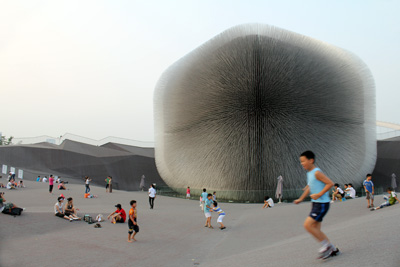
Hi Archinect!
I was planning to write some long, thoughtful posts over the summer, digesting and meditating on my first-year experiences at the GSD, but it turns out that what I really needed was just a break from the school routine. I definitely got that, as did most of my classmates. We’ve been back at school since Monday, and—if I may say so myself—we’ve never looked, or felt, so good: (relatively) fit, tanned, and relaxed. Each person’s combination of working, volunteering, traveling, and/or relaxing must have been good.

[For illustration purposes only.]
And if you combine that with feeling glad to see each other in such fine circumstances, and looking forward to the new school year (while having less anxiety than last year because now we know we’ll survive), we are one very happy bunch.
Can I tell you what made my summer so rewarding?
First, teaching representation at Career Discovery: I presented short lectures in Piper (about sketching, perspective and the perception of depth, and diagrams), developed and delivered my own workshops and assignments, and gave desk crits and the occasional review. With 55 students (or five sections) with diverse skills and backgrounds (from 17 to 70 years old, and from those with no art/design experience to those with undergraduate degrees in architecture), it was like a boot camp for teaching the way that first year was a boot camp for architectural skills, so I learned a huge amount.
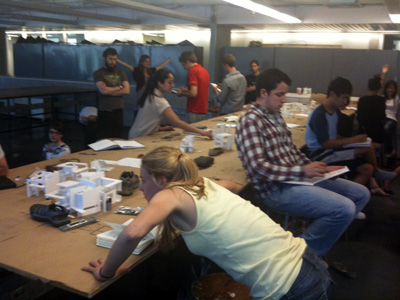
[A gesture drawing exercise with two of my sections….awww, I miss you guys!]
Second, the perfect antidote to spending half the summer in Gund: a month-long trip to China and Japan! In China, I visited Beijing, Shanghai, Nanjing, and a smaller city and a rural village a couple of hours from Nanjing. Halfway through the trip, I found a seat sale for Japan so I also spent a couple of weeks visiting Kyoto, Osaka, Nara, and Tokyo, before taking a ferry from Kobe back to Tianjin, which is connected to Beijing by the world’s fastest intercity train (333 km/h).
To compare the two parts of the trip, China was the more topical and educational experience, given its rising global importance and the unprecedented scale of development and migration currently underway there. When I was there, I really had the impression that the globe has only seen this scale of change a few times (and perhaps never at this pace)—when the dinosaurs died out, or when Europe’s forests were cleared in the Middle Ages, maybe. So it was incredible to see—exhilarating at times and always impressive, but also sobering to think of the environmental impact and the widespread poverty and growing economic inequality that pose huge problems for Chinese society.

[Traffic jam in Beijing]
On the other hand, Japan was simply an immensely pleasurable, yet remarkably foreign, place to visit. I saw historical architecture—from the temples of Nara to 19th century vernacular architecture in the descriptively named “Open-Air Museum of Old Japanese Farm Houses”—and contemporary architecture—from Le Corbusier’s “National Museum of Western Art” in Ueno, to the playground of sexy and expensive façades of Ginza and Harajuku, to what I thought was a really sophisticated and profound work of architecture and urbanism in Rafael Viñoly’s Tokyo International Forum.
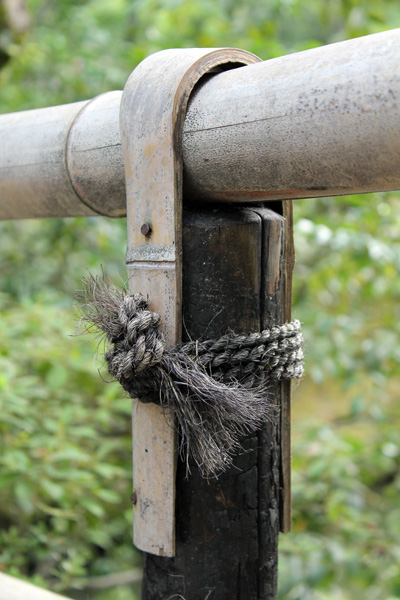
[A handrail at the Golden Pavilion in Kyoto.]
The food was also incredible in both countries—in China, a bit more for the tastes, and Japan a bit more for the visual appeal—and in both, I benefitted from the wonderful hospitality of friends (primarily in China) and extended family members that I’d only met once before, as a child (in Japan). And it was fascinating to observe the overall feeling in both countries among young people. In China: any mixed feelings about the pace of the country’s development seems to be overshadowed by an overwhelming hunger (or even desperation) for a share—or an ever-larger share, for the elite—of China’s rapidly growing economic pie. And in Japan: the confidence that comes with an accomplished and orderly society, of course, but also a bit of malaise or concern about issues like un(der)employment and immigration—and maybe, about face and future of their country.
Here are some photos from China:
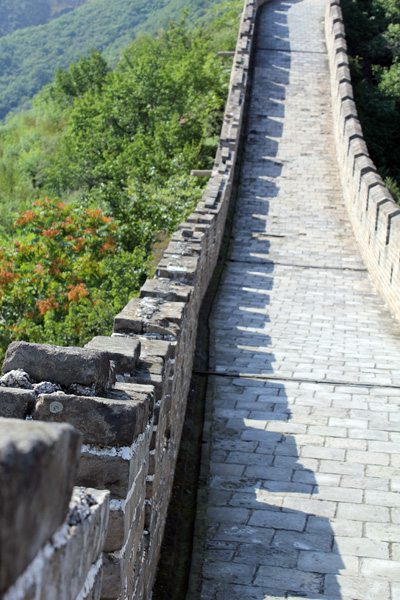
[The Great Wall at Mùtiányù.]
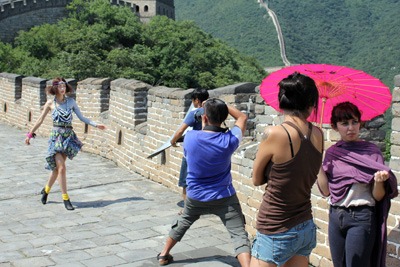
[Fashion shoot at Mùtiányù.]
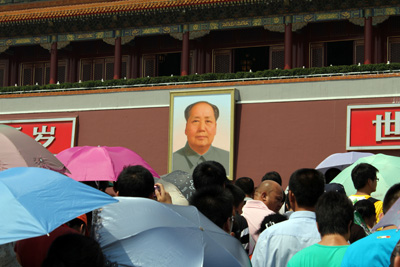
[Tourists throng towards the gate of the Forbidden City, overlooked by the portrait of Mao Zedong.]
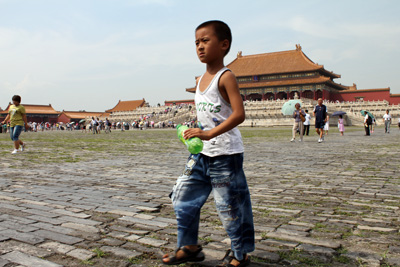
[Inside the Forbidden City.]

[Inside the Forbidden City. The repetition of building and courtyard forms, and long passages closed in on either side by walls, are seemingly endless.]
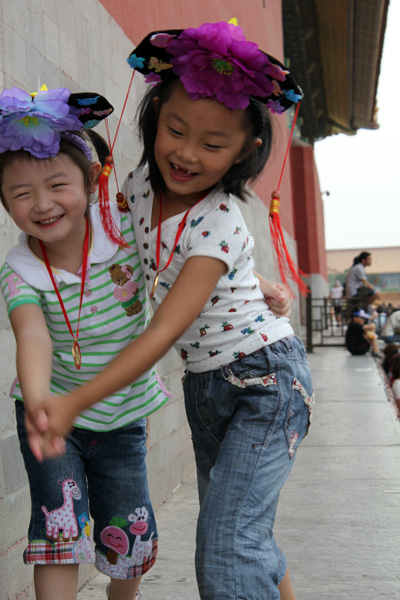
[Inside the Forbidden City.]
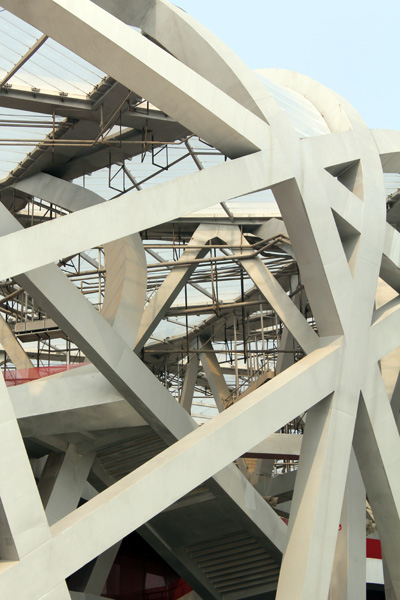
[The National Stadium, a.k.a. the "Bird's Nest": a tangle of structure and systems.]

[The National Aquatics Center, a.k.a. the "Water Cube," is now occupied by crowds of decidedly un-Olympic looking bodies.]

[Rows of flimsy "temporary" housing units are ubiquitous across China.]

[Shanghai's Hongqiao Railway Station opened for business July 1, 2010 and was still receiving its finishing touches in early August.]
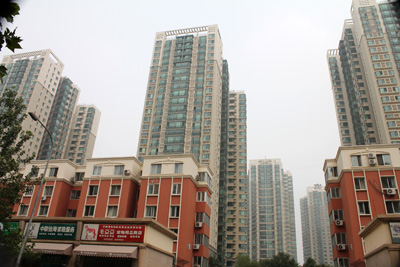
[The "super block" community in South-East Beijing where my friends/hosts live. A Chinese friend explained to me that the repetition of identical buildings (and trees, roads, street furniture, etc.) is not considered to be totalitarian or soul-wearying, but rather, beautiful and orderly. If we look at how repetition, grids, and symmetry create a harmonious whole in traditional architecture (the Forbidden City, temple precincts, hutongs and other traditional courtyard housing types), then we can see the continuity of this aesthetic in Chinese culture. I find it difficult to appreciate, though.]
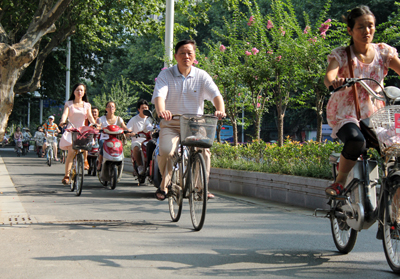
[Nanjing commuters on bicycles and scooters.]
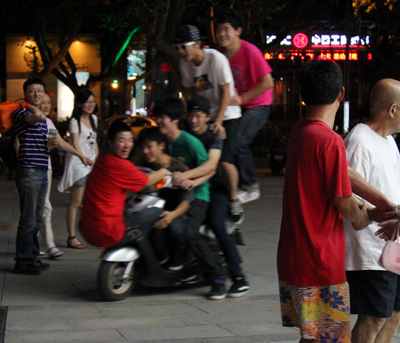
[Nanjing at night.]

[Nanjing at night.]
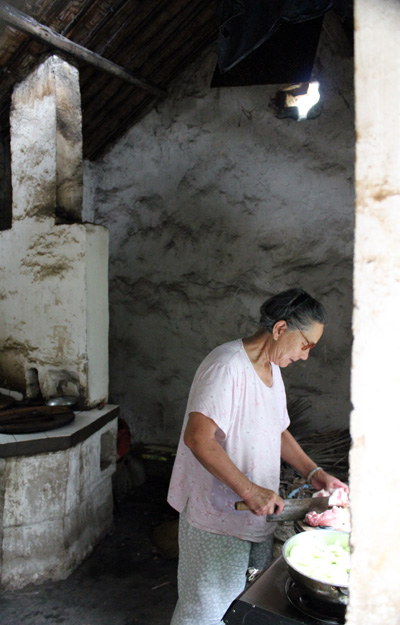
[My friend's grandmother, preparing dinner in her home in a subsistence farming village outside of Chaohu. The oven behind her burns leaves, and water is drawn from a well, although the family has electricity for a ceiling fan and fluorescent lights in the other building. The food, as throughout China, was delicious: I found that in both urban and rural China, poor people still access and enjoy high-quality fresh food, unlike in North America.]

[Lake Chao.]

[An insect on the farm.]

[Everything is bigger in China! I saw Bao Xishun, formerly the world's tallest man, in the Beijing International Airport. Bao was born in Inner Mongolia, China, in 1951, and stands 7'9".]

[The UK Pavilion at the Shanghai Expo.]
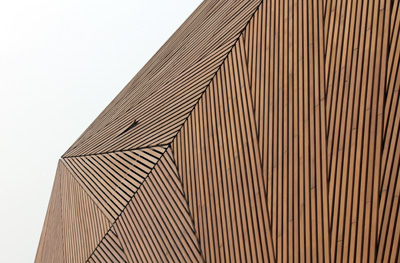
[The Canada Pavilion at the Shanghai Expo.]

[Inside the Canada Pavilion at the Shanghai Expo.]
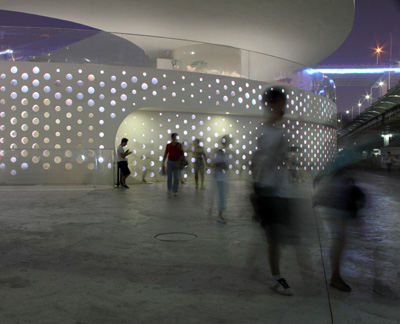
[The Danish Pavilion, designed by Bjarke Ingels, is supposed to allow you to borrow a bicycle and bike up and down the ramps that form the structure. However, the bicycles were not in use when I went.]
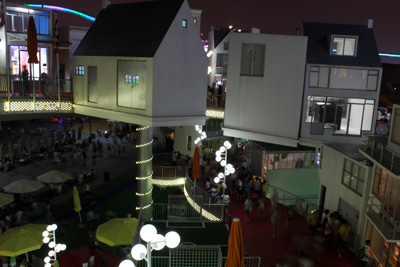
[The Netherlands Pavilion by John Kormeling, known as "Happy Street."]
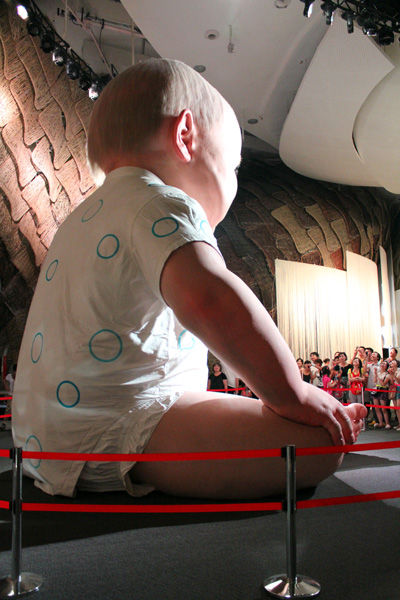
[An enormous moving baby, designed by the Spanish filmmaker Isabel Coixet, inexplicably serves as the finale for the Spanish Pavilion.]
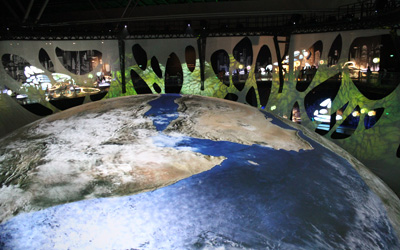
[Inside the Urban Planet Pavilion, one of Shanghai Expo's thematic pavilions. The theme of the 2010 Shanghai World Expo is "Better City - Better Life."]
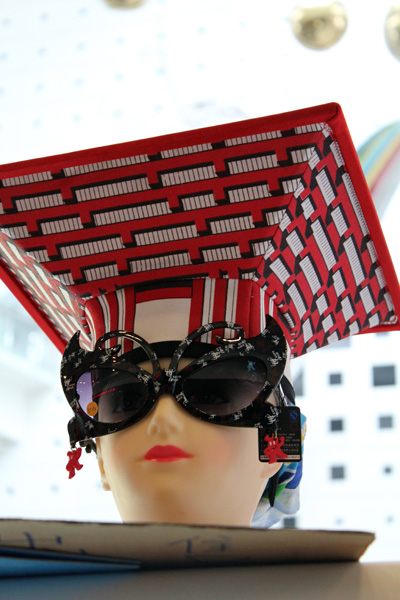
[A souvenir hat in the form of the China Pavilion.]
And some from Japan:
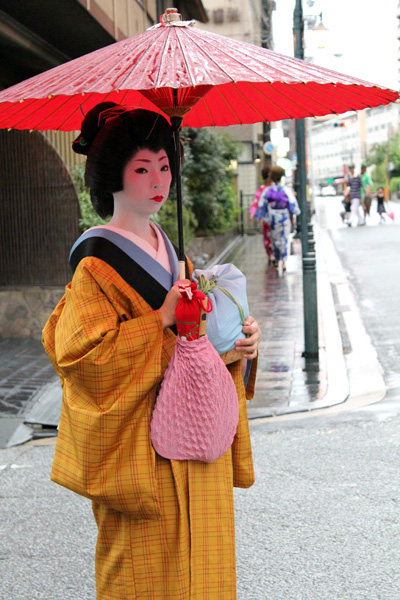
[A geisha in Gion, a traditional entertainment district in Kyoto.]
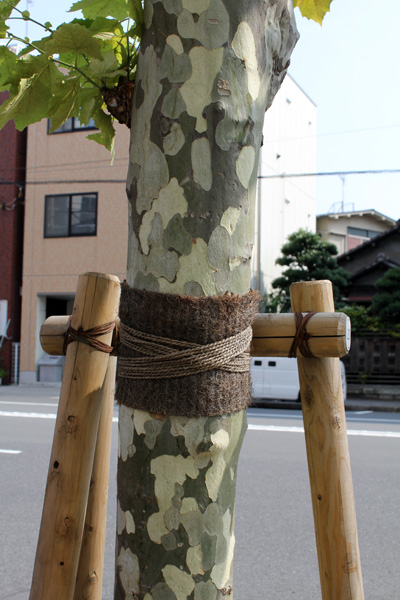
[A supported tree in Asakusa in Tokyo.]

[Most Japanese buildings have exterior staircases (perhaps required by code in case of fire or earthquakes), but this building took it to another level. Even relatively "ordinary" buildings in Japan are often very expressive.]
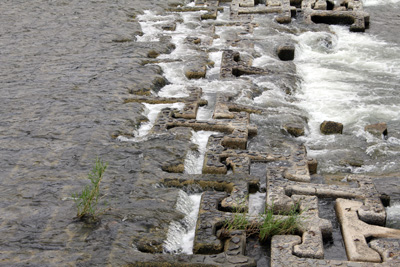
[Even nature is constructed in Japan: Kyoto's Kamo River.]

[Children playing on the stepping-stones in Kamo River.]

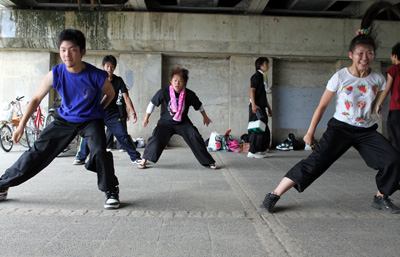
[Teenagers dancing on their lunch break under a bridge that crosses Kamo River.]
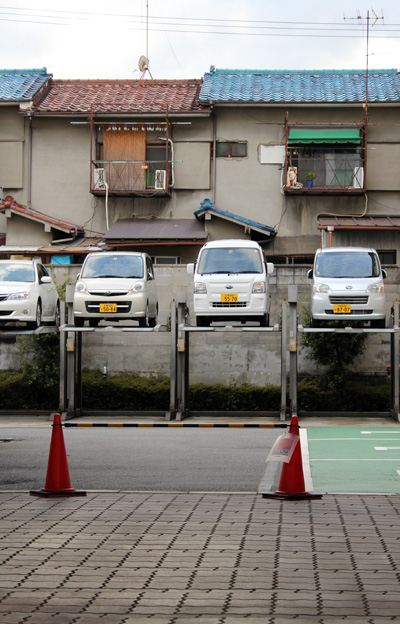
[Parking in Kyoto.]
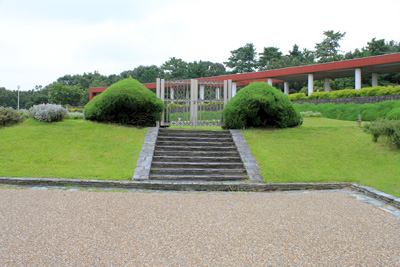
[A gate in an Osaka park.]
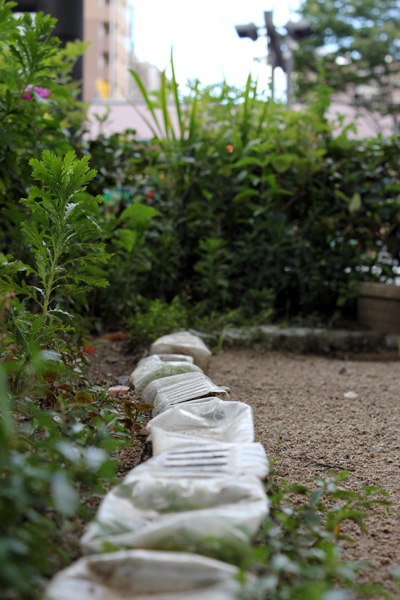
[Humble garden dividers. This tiny plot was one of a series of community garden plots along a major downtown street in Kyoto. It was wonderful to see these small, carefully and idiosyncratically tended squares of green mere inches from a cacophony of urban traffic, amidst the city's sleek high-rises.]
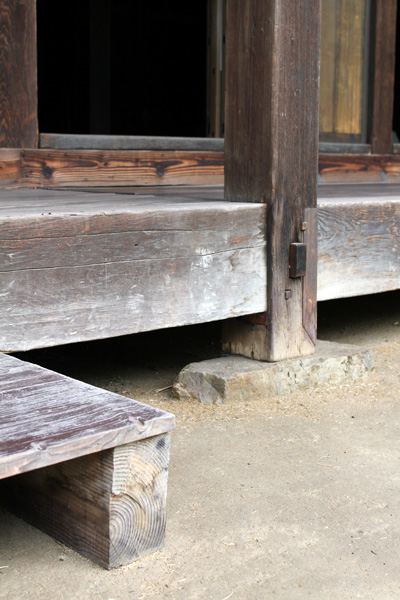
[Buildings touch the ground lightly at the Open-Air Museum of Old Japanese Farmhouses in Osaka.]
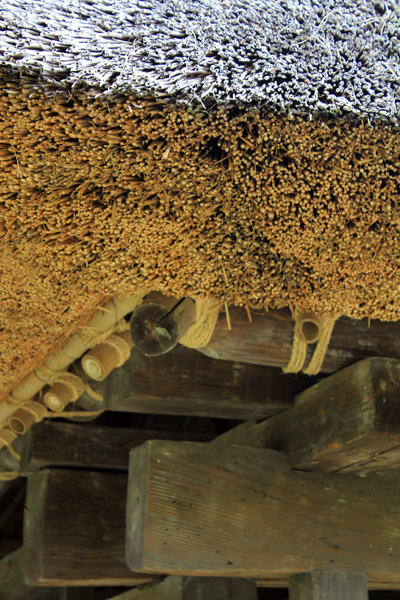
[A thatched roof at the Open-Air Museum of Old Japanese Farmhouses in Osaka.]

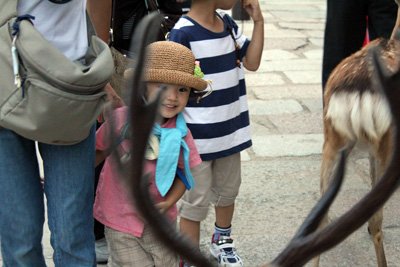
[The sacred deer of Nara.]
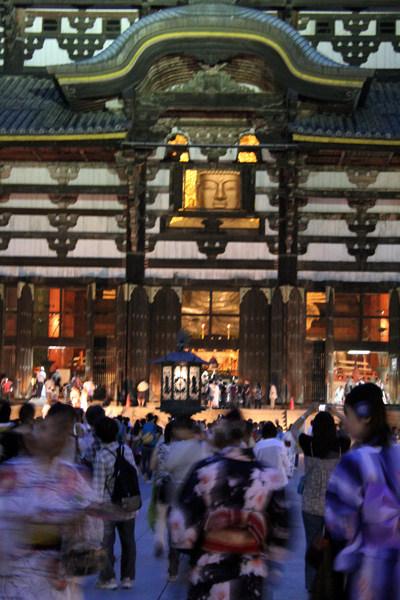
[The stupendous Todaiji temple complex in Nara includes the largest wooden building in the world, which in turn houses the world’s largest bronze statue of the Buddha Vairocana. I was lucky to be there during the Obon festival, so after dusk they did what they only do a few times a year: light up the Buddha and throw open the high window so he can look outside.]
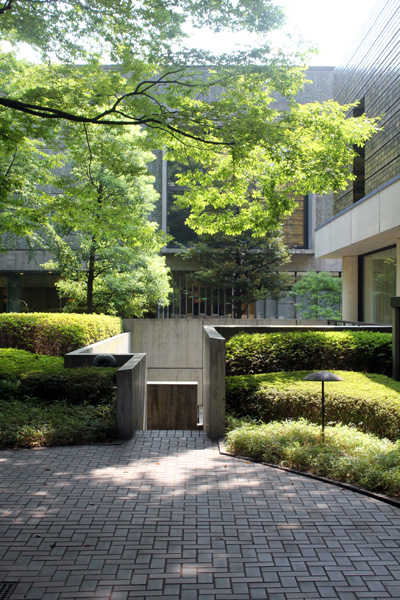

[Le Corbusier's National Museum of Western Art in Ueno, Tokyo.]

[Rafael Viñoly's Tokyo International Forum soars above the Tokyo subway station.]

[I found the Tokyo International Forum difficult to capture in photography because it was its urbanism, rather than its architecture per se, that I found most powerful. But this is the main enclosed space, bounded by a solid wall (housing conference rooms) on the left, and by glass on the right, opening onto the outdoor plaza. From this ground-level lobby one can go up to access the conference rooms and various bridges across the plaza to the other building that bounds its, or down, to large exhibition halls that span underneath the plaza.]
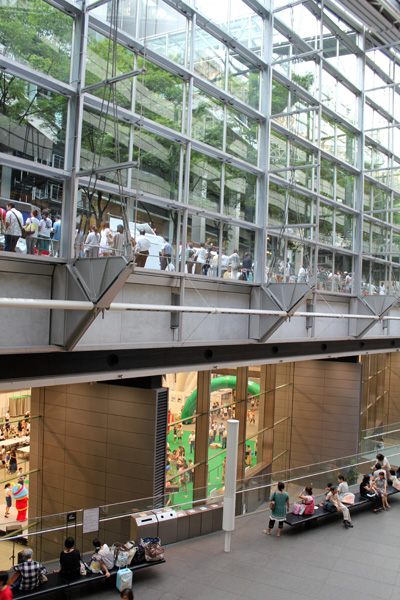
[An exhibition hall underneath the exterior plaza.]
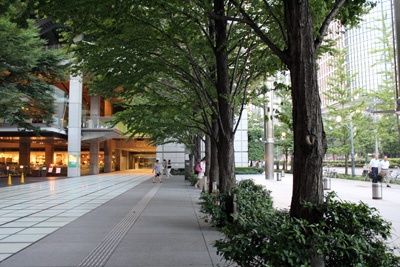
[Rows of pylons and trees effectively demarcate the space of the exterior plaza in relation to the street.]
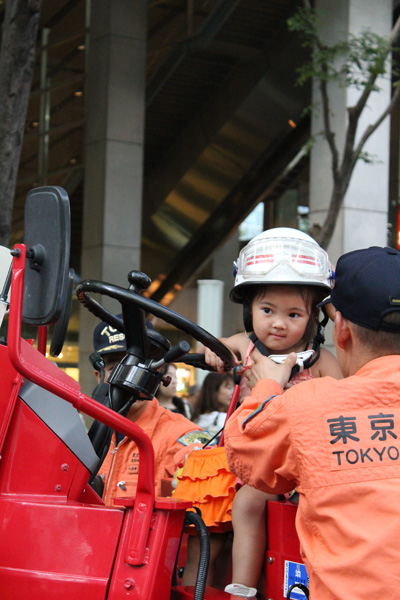
[The Tokyo International Forum shines as a public gathering-place: a children's festival hosted by the Tokyo Fire Departmentwas underway when I visited, and hundreds of children were putting out fires with real fire-hoses, driving miniature fire engines, and getting hoisted up into the seats of real fire engines by firemen (I did not see any female firefighters; Japan is still quite rigidly structured along gender lines). I think firefighters may hold a particularly respected place in Tokyo's imagination because of memories of the many devastating fires that Edo/Tokyo--long a crowded city, and until modern times built of bamboo, wood, straw, and paper--has suffered throughout its history.]

[Tokyo at night, as seen from Tokyo Metropolitan Government observatory.]

[A sunset view from the 'China Express' ferry, a 52-hour ride from Kobe, Japan, to Tianjin, China.]
Whew! I’m exhausted and I haven’t even told you about the start of the school year here. That’ll have to wait until my next post, which will be called “The GSD took my desk away and all I got are these crummy drafting dots.”

Thanks for reading!
Lian
P.S. THANK YOU to McGill School of Architecture for the scholarship funds that made my wonderful China/Japan trip possible!
P.P.S. If you’re wondering what happened to my half-hourly drawing project—I did it and have all the cards…more on that soon.

 [For illustration purposes only.]
[For illustration purposes only.] [Tokyo at night, as seen from Tokyo Metropolitan Government observatory.]
[Tokyo at night, as seen from Tokyo Metropolitan Government observatory.]



3 Comments
fantastic picture essay.
my father in law (i live in tokyo married to mysterious japanese lady) says that when he visits places like China and Vietnam on business the people and the hungry for success culture remind him of what it was like to grow up in Japan after the end of the war. He says it feels returning to the heyday of his youth.
I wonder if China will at some point be just like Japan, a kind of quiet country with a large economy. It is hard to image it today.
Thanks for your comments! That makes sense about post-war Japan. I wonder if the stress the Japanese feel today about their slipping economy is driven in part by memories of those times... my relatives just always tell me that unless you were a farmer, there was not enough food. So they were literally hungry for success.
I have wondered the same thing. My father in law says japan is not what it used to be. i am not sure if that is entirely bad. there were a lot of profoundly bad things going on while the economy soared. it would be nice if a middle way could be found.
he was from farming family so had food but mom in law did not. she talks about how it was hard to get enough to eat and selling the family kimonos to buy vegetables, etc.
i think it was hard for everyone though and somehow the whole country was able to focus on improvement, farmers and urban dwellers alike. that kind of vision is not here anymore, that is for certain. instead we change prime ministers every few months and even the govt is lost in its own arse....maybe it is the loss of that vision that drives the ennui today.
Block this user
Are you sure you want to block this user and hide all related comments throughout the site?
Archinect
This is your first comment on Archinect. Your comment will be visible once approved.